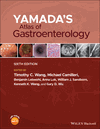Endoscopic retrograde cholangiopancreatography
Summary
This chapter offers diverse images that provide an overview of endoscopic retrograde cholangiopancreatography (ERCP) and aims to provide a synopsis through pictures and illustrations rather than through text. ERCP is a complex procedure utilized in the management of pancreatic and biliary conditions. Following advances in noninvasive cross-sectional imaging modalities, namely magnetic resonance imaging/magnetic resonance cholangiopancreatography and computed tomography, and increasing availability of endoscopic ultrasound, ERCP is now primarily performed for therapeutic intervention. The primary role of ERCP is to restore normal drainage of the biliary and pancreatic ducts in the setting of obstruction and leaks. Improvements in endoscopic techniques have enabled ERCP to play an increasingly safe and effective role in the management of pancreatic diseases. Endoscopic retrograde cholangiopancreatography remains an invaluable tool for the management of pancreaticobiliary diseases.



